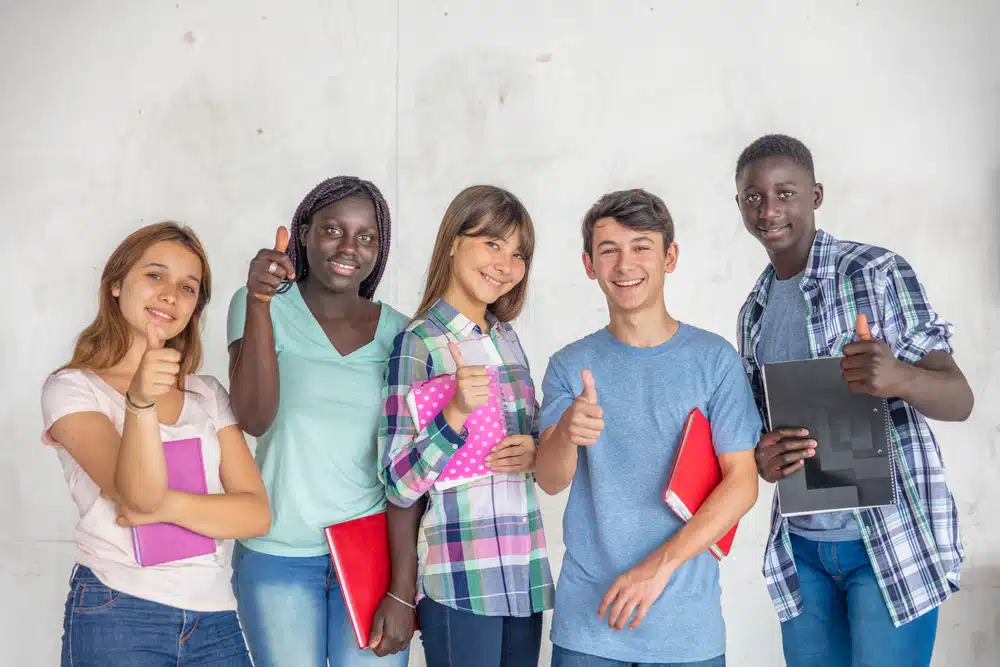The 3M Young Scientist Challenge: Unleashing the Potential of Future Innovators
In the ever-evolving landscape of science and technology, it is crucial to invest in and encourage the creative potential of young minds. The Discovery Education 3M Young Scientist Challenge is a stellar initiative that provides an exciting platform for students in grades 5-8 to showcase their problem-solving skills and passion for science.
By offering a supportive and competitive environment, this annual competition fosters innovative thinking and empowers the next generation of scientific leaders to tackle pressing global issues.
The Discovery Education 3M Young Scientist Challenge has become a cornerstone in promoting STEM (Science, Technology, Engineering, and Mathematics) education for middle school students across the United States. By participating in this prestigious competition, young innovators not only have the opportunity to win substantial prizes, but also gain valuable experience, mentorship, and exposure, all of which can inspire them to pursue further studies and careers in STEM fields. As a result, the 3M Young Scientist Challenge plays a pivotal role in shaping the future of innovation and scientific discovery.
In this blog post, we will take a closer look at the Discovery Education 3M Young Scientist Challenge, examining its history, purpose, eligibility criteria, competition format, and some of its most successful participants. By shedding light on this exceptional opportunity, we hope to inspire young minds to participate, as well as parents, educators, and community members to support and motivate these budding innovators.
What is the 3M Young Scientist Challenge?
What is the 3M Young Scientist Challenge? Originally established in 1999 as the Discovery Channel Young Scientist Challenge (DCYSC), the 3M Young Scientist Challenge was designed as an engineering research and exhibit competition for students in grades 5 through 8.
The primary sponsors of the event included Discovery Communications, Society for Science and the Public, and Elmer’s Glue. To qualify for the DCYSC, students had to participate in an International Science and Engineering-affiliated science fair and receive a nomination from a teacher or professional.
The application process for the competition required students to submit several essays, which were assessed by DCYSC judges for communication skills. Based on these evaluations, 400 semi-finalists and 40 finalists were chosen, with the finalists receiving an all-expenses-paid trip to Washington, D.C., to take part in the final contest.
The finals were divided into two segments. The first part, accounting for 20% of the total score, was a research presentation held at prestigious institutions such as the Smithsonian’s National Museum of Natural History, the National Academy of Sciences, or other national academic associations that varied each year.
The second part comprised six science-related challenges held at venues like the National Institutes of Health or the University of Maryland. After each challenge, participants were required to give a presentation in a format like a radio show, TV show, or news conference, which contributed to 10% of their total score.
In addition, students presented a simple science experiment, known as a Whelmer, in front of cameras, which constituted 15% of their overall score. The final 5% of the score was based on teamwork, as finalists were divided into eight teams of five members each to compete in the science challenges.
Since its inception in 2008, the Discovery Education 3M Young Scientist Challenge has been instrumental in fostering a culture of innovation and curiosity among middle school students. By bringing together the expertise and resources of Discovery Education and 3M, this competition has not only inspired thousands of young minds but also ensured they have access to high-quality learning resources and mentorship from industry professionals.
The partnership between these two organizations has proven to be a powerful force in nurturing the next generation of scientific leaders, paving the way for groundbreaking discoveries and advancements in various fields.
Over the years, the Discovery Education 3M Young Scientist Challenge has evolved to adapt to the changing needs and interests of young learners, continuously refining its competition format and criteria to better align with current educational standards and real-world issues.
By emphasizing the importance of creativity, critical thinking, collaboration, and effective communication, this competition has helped students develop essential skills that will serve them well throughout their academic and professional careers.
Moreover, by addressing pressing global challenges such as climate change, energy sustainability, and public health, the Discovery Education 3M Young Scientist Challenge encourages students to apply their scientific knowledge to create meaningful, real-world solutions, thereby reinforcing the importance of interdisciplinary learning and fostering a sense of social responsibility among participants.
The Purpose of the Challenge
The Discovery Education 3M Young Scientist Challenge plays a vital role in nurturing the scientific curiosity and passion of young people. As a prestigious competition, it not only offers a platform for young innovators to showcase their skills but also serves as a catalyst for instilling a lifelong love of learning and scientific exploration. The challenge aims to achieve several key objectives:
Encourage critical and creative thinking: By prompting students to address real-world problems, the competition pushes them to think critically and creatively, applying their scientific knowledge and skills to develop innovative solutions. This process of ideation and problem-solving is essential for the development of well-rounded, analytical thinkers who can contribute to advancements in various fields.
Promote STEM subjects and careers: By focusing on Science, Technology, Engineering, and Mathematics (STEM), the challenge fosters an interest in these subjects and helps students envision a future in STEM-related careers. By showcasing the potential impact of their work, the competition helps students understand the value of STEM in solving global challenges and improving lives, inspiring them to pursue further education and careers in these fields.
Develop collaboration, communication, and problem-solving skills: Throughout the competition, students must work with others, including their 3M mentors and fellow competitors, to refine their ideas and present their innovations effectively. This collaborative environment encourages the development of essential teamwork and communication skills, which are invaluable in both academic and professional settings. Additionally, by engaging in problem-solving processes, students hone their ability to identify, analyze, and address complex challenges.
Recognize and reward young scientific talent: The Discovery Education 3M Young Scientist Challenge acknowledges and rewards the exceptional achievements of young scientists, offering recognition, mentorship, and financial incentives to support their continued growth and development. This recognition not only boosts the student’s confidence but also motivates them to continue pursuing their passion for science and innovation while inspiring their peers to do the same.
By addressing these objectives, the Discovery Education 3M Young Scientist Challenge contributes to the overall growth and development of young scientific minds. The competition fosters a supportive and enriching environment in which students can thrive, ultimately paving the way for a new generation of scientific leaders dedicated to addressing the world’s most pressing challenges.
Challenge Themes
Since 2003, the themes for the Young Scientist Challenge have been inspired by scientific curiosities, with each year focusing on activities and innovations related to these topics.
In 2003, activities celebrated the 100th anniversary of the Wright Brothers’ first flight on December 17, 1903. The challenges included replicating the 1901 wind tunnel and lift balance for testing wing designs, as well as constructing rocket-propelled go-carts powered by compressed carbon dioxide gas. This theme aimed to inspire the next generation of aerospace engineers and inventors.
In 2004, the activities commemorated the 100th anniversary of Einstein’s Theory of Relativity during the World Year of Physics 2005. This theme provided an opportunity for students to explore the groundbreaking concepts of space and time, emphasizing the importance of theoretical physics in understanding the universe.
In 2005, in response to events like Hurricane Katrina and the 2004 Indonesian tsunami, the activities focused on understanding natural disasters. Participants engaged with a 20-foot tall vortex generator, a 40-foot tsunami wave tank simulator, and methods for safely disposing of biological waste after a natural disaster. This theme highlighted the importance of disaster preparedness and the role of science in mitigating the effects of such events.
In 2006, the theme “Disease Detectives” was inspired by the H5N1 avian influenza scare. Activities included virtual colonoscopy screening, mold identification and remediation, and avian flu containment using herd immunity models. This theme emphasized the crucial role of scientific research in preventing and managing outbreaks of infectious diseases.
In 2008, NASA-themed challenges took center stage. Finalists met NASA scientists, worked in a 1/6th gravity simulation, attempted a repair to the Hubble Space Telescope, and searched for water on Mars. This theme allowed participants to explore the frontiers of space exploration and underscored the importance of interdisciplinary cooperation in advancing scientific knowledge.
In 2009, the finalists participated in four rounds of challenges based on the theme “The Science of Everyday Life.” This theme demonstrated the ubiquitous nature of science and its impact on various aspects of daily life, from the food we eat to the technology we use.
In 2010, the focus shifted to human safety. Contestants were judged on their scientific knowledge and ability to apply it to safety and security measures. This theme aimed to inspire innovative solutions for protecting people in various environments, from natural disasters to public health crises.
Throughout the years, the Young Scientist Challenge has continued to evolve, adapting its themes to reflect current scientific interests and challenges. These themes not only engage young minds in STEM but also demonstrate the power and importance of science in shaping the world around us.
How Does the 3M Young Scientist Challenge Work?
How does the 3M Young Scientist Challenge work? The Discovery Education 3M Young Scientist Challenge is an exceptional opportunity for students in grades 5-8, who are between 10-14 years old, to showcase their innovative problem-solving skills.
Open to legal residents of the United States, including Washington D.C. and U.S. territories, the competition welcomes participants from public, private, and home schools, provided they have parental or guardian consent.
This prestigious challenge follows a two-phase structure, with each phase designed to test and refine the students’ scientific prowess, creativity, and communication skills.
During the Entry Round, students must submit a 1-2 minute video that effectively explains the science behind a new innovation or solution capable of solving or significantly impacting an everyday problem.
These videos should be engaging, and creative, and accurately convey the scientific principles underpinning the proposed innovation. This initial round encourages students to think critically about real-world issues, apply their scientific knowledge, and develop their communication skills.
Once the Entry Round is complete, ten finalists are chosen based on the quality and potential impact of their video submissions. In the Final Event, these finalists are paired with 3M mentors, who are experts in various scientific disciplines.
Over several months, the finalists work closely with their mentors to refine and develop their innovations, benefiting from 3M’s extensive resources and cutting-edge technologies. This mentorship phase offers the students valuable insights into the research and development process, enabling them to gain practical experience and learn from industry professionals.
The competition culminates in a final event where the finalists present their polished innovations to a panel of expert judges. These presentations must demonstrate the students’ in-depth understanding of the science behind their ideas, as well as the potential real-world impact of their innovations.
The judges evaluate each presentation based on criteria such as scientific accuracy, creativity, feasibility, and communication skills. The grand prize winner is selected after careful consideration of these factors, ensuring that the winning innovation reflects the spirit of scientific inquiry, creativity, and problem-solving that the Discovery Education 3M Young Scientist Challenge aims to promote.
Awards and Prizes
The Discovery Education 3M Young Scientist Challenge offers substantial rewards for its participants:
Grand Prize: The winner receives a $25,000 cash prize, the title of “America’s Top Young Scientist,” and a trip to 3M’s Innovation Center in St. Paul, Minnesota.
Finalists: Each finalist receives a $1,000 cash prize and a trip to the final event.
Honorable Mentions: Additional recognition and prizes may be awarded to deserving participants at the discretion of the judges.
Who are some of the Winners of the Challenge?
Who are some of the winners of the challenge? Throughout its history, the Discovery Education 3M Young Scientist Challenge has been instrumental in uncovering the remarkable potential of young innovators, many of whom have gone on to make significant contributions to their fields or pursue STEM careers.
By providing a platform for these talented individuals, the competition has not only celebrated their achievements but also inspired countless others to explore the world of science and innovation. Below are a few noteworthy success stories from past participants:
Kara Fan, from San Diego, emerged as the winner of the 2019 top prize with her groundbreaking nano-particle bandage concept. Her innovation involved creating an antibacterial bandage using a silver particle solution, which demonstrated the potential for novel approaches to wound care and infection prevention.
In 2020, Anika Chebrolu, a 14-year-old from Frisco, Texas, won the 3M Young Scientist Challenge for her ambitious project aimed at identifying the spike protein of the SARS-CoV-2 virus. Her work showcased the importance of scientific research in addressing global health challenges and highlighted the potential for young scientists to contribute to significant breakthroughs in combating diseases like COVID-19.
Sarah Park from Jacksonville, Florida, secured the Top Prize and the title of America’s Top Young Scientist in 2021 by developing Spark Care+, a music therapy treatment device for mental health disorders. Her innovative solution incorporated artificial intelligence, galvanic skin response technology to measure sweat gland activity, and photoplethysmography (PPG) for heart rate monitoring, showcasing the power of interdisciplinary thinking in addressing complex health issues.
These success stories exemplify the incredible potential of young minds when given the opportunity to participate in competitions like the Discovery Education 3M Young Scientist Challenge. By fostering an environment that supports and nurtures innovative thinking, the challenge empowers the next generation of scientists, engineers, and entrepreneurs to address the most pressing challenges facing our world today.
Furthermore, these achievements serve as an inspiration for other young students, motivating them to pursue their passions, embrace STEM fields, and strive to make a difference in the world through their ingenuity and creativity.
Conclusion
Like any other STEM competition, the Discovery Education 3M Young Scientist Challenge offers an exceptional opportunity for young students to delve into their passion for science and utilize their problem-solving abilities in a practical and significant manner. By taking part in this competition, students are not only recognized for their inventiveness and originality but also motivated to continue their education and pursue careers in STEM fields.
The challenge presents a platform for budding innovators to exhibit their ideas, gain mentorship from industry professionals, and connect with peers who share similar interests, all while contributing to a more sustainable and inventive future.
For the ambitious young scientists out there, the Discovery Education 3M Young Scientist Challenge represents a distinctive and thrilling chance to leave a lasting impression in the realm of science and innovation. To parents, educators, and community members, your support, encouragement, and guidance can play a crucial role in nurturing the next generation of STEM leaders.
Want to learn more about getting a STEM majors? You’ve come to the right place. At AdmissionSight, we have over 10 years of experience guiding students through the competitive admissions process.
AdmissionSight can help you put your best foot forward when applying to college this fall. Contact us today for more information on our services.










































